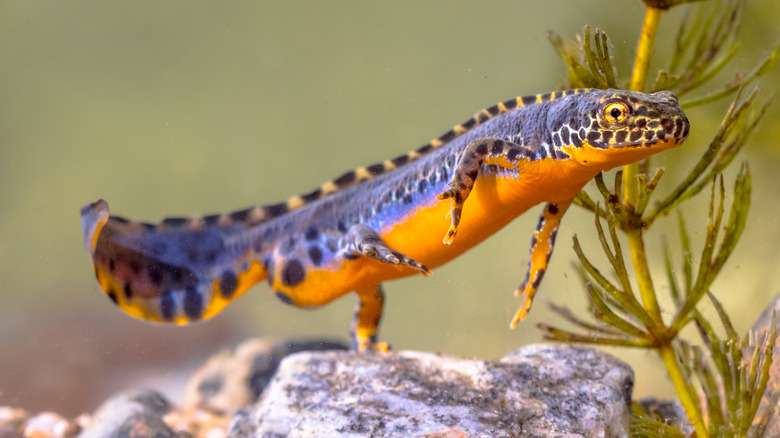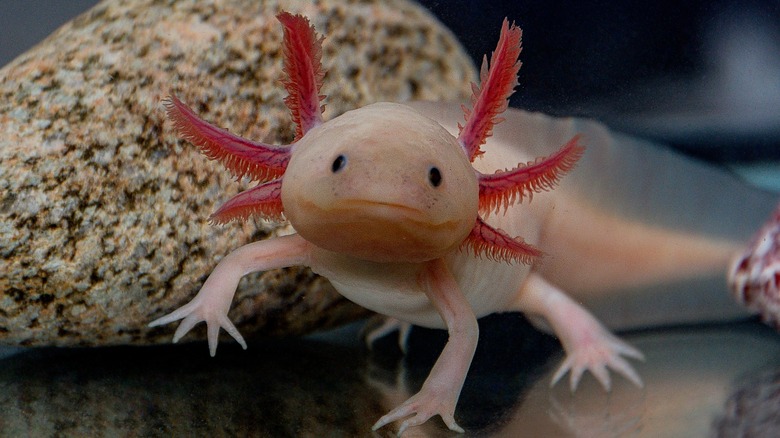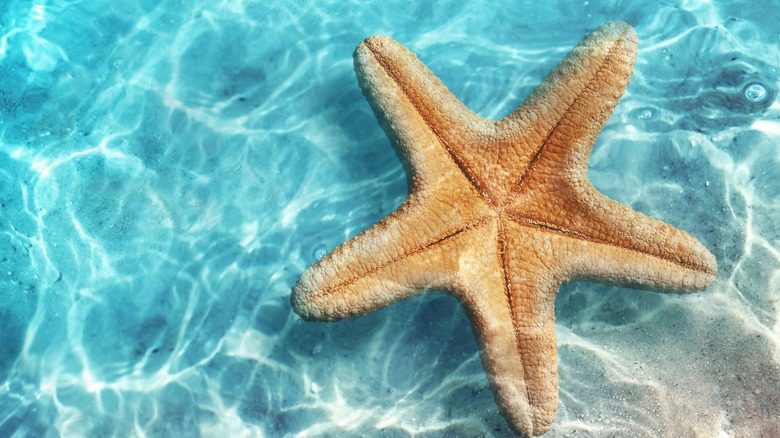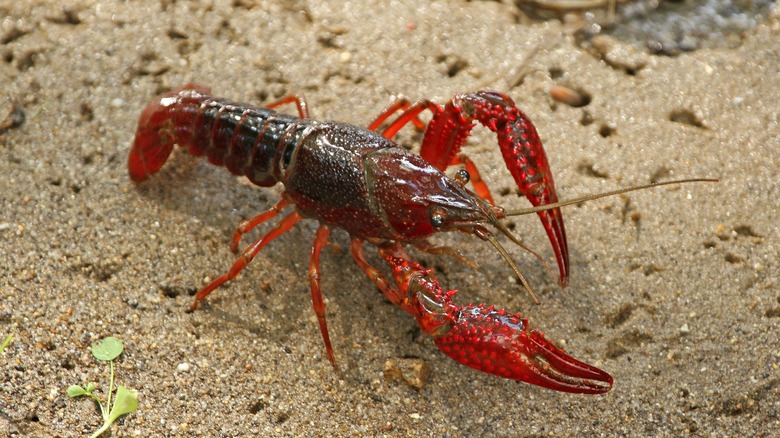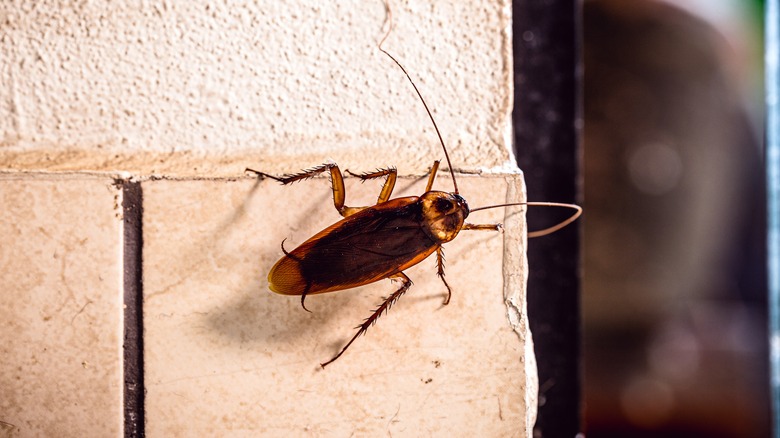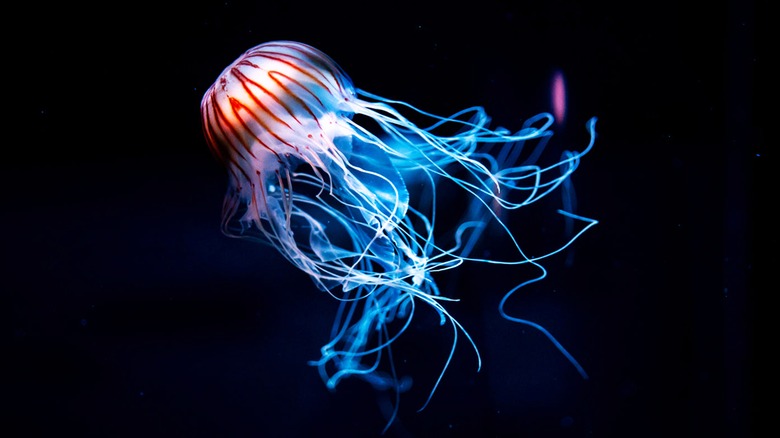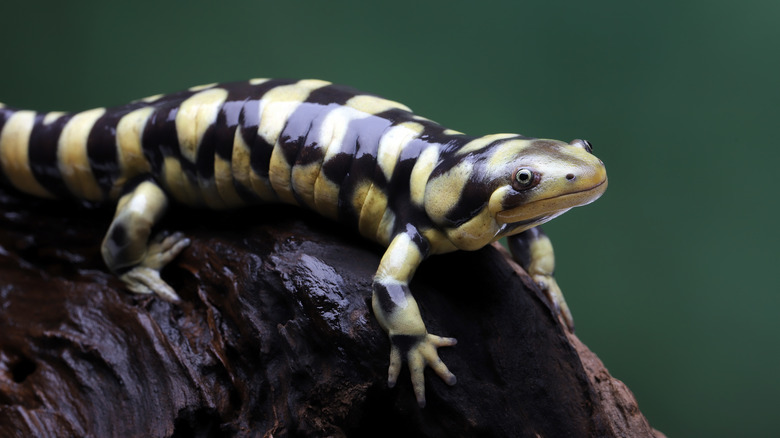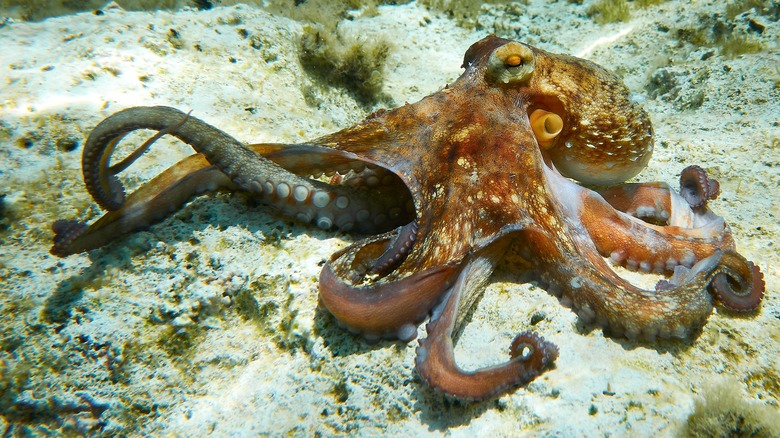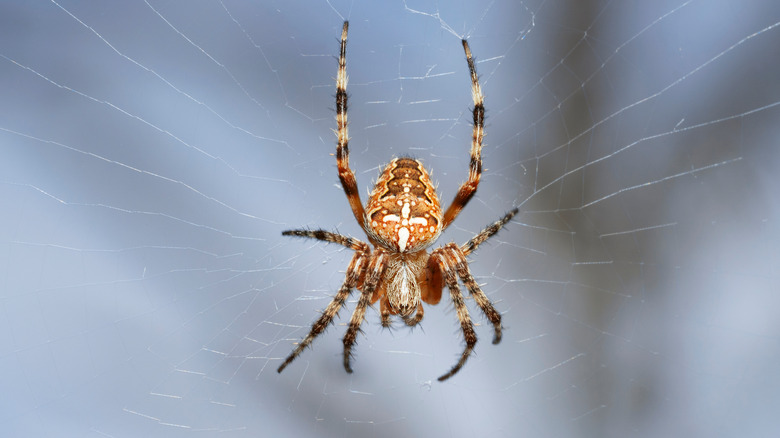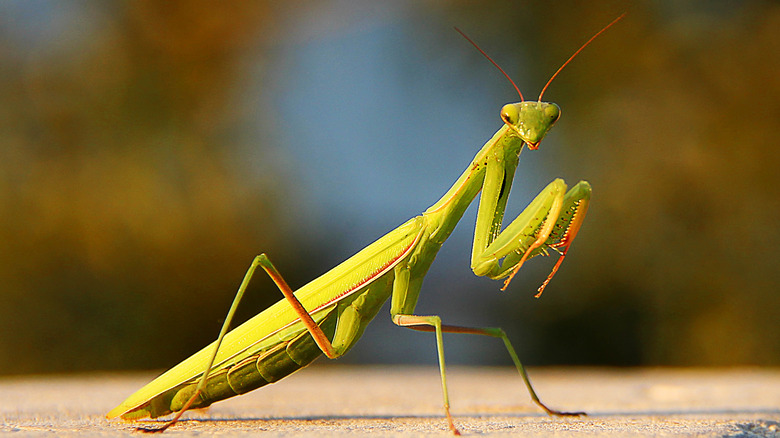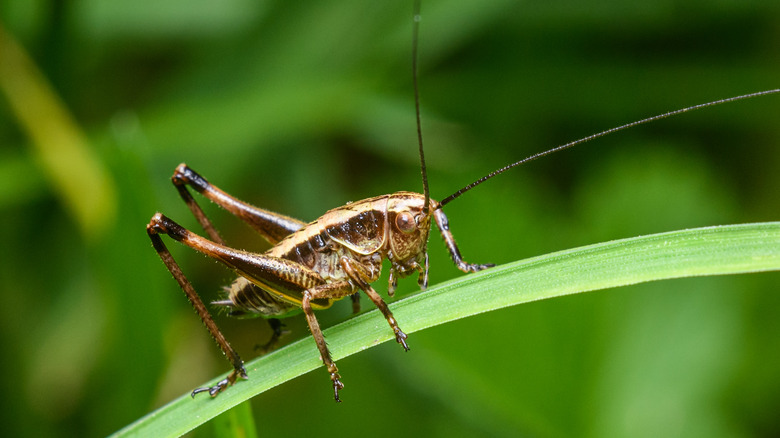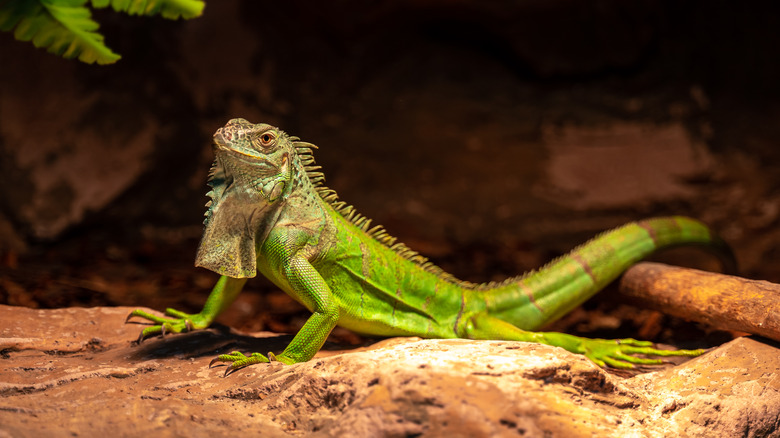Extraordinary Animals That Can Regrow Limbs
Nature is pretty remarkable in and of itself, but couple that with the fundamentals of evolution and what we have is a planet that is constantly churning out new and improved versions of already incredible creatures — now more adaptable, more capable of surviving even longer, of thriving even better, and of being their best selves. According to BBC, there are 1.2 million unique species in the world, which means 1.2 million different marvels, but that is only a fraction of the total number on this earth (estimated at 8.7 million). Atlas Obscura tells us that between 15,000 and 18,000 species are identified each year, and, by BBC's estimation, it will take 1,000 years to identify everything.
Think about that. With all those species growing, learning, and evolving, there is an endless supply of things that we, humans, can learn from them — none of which are more pressing than the prospect of regeneration. After all, the Amputee Coalition counts 2 million people missing limbs in the United States alone. While the mechanics of cutting-edge prosthetics continue to grow, so too does the study of regeneration in all of nature's wonderful creatures that have the ability to regrow lost limbs. Clearly, there are cells out there that regrow limbs — now if only science could replicate those cells in a human being.
While the study of regeneration rages on, here are some of the magical creatures that already have it down pat.
Axolotl
Along with being hands down the most adorable and simultaneously weird creature on the planet, the axolotl is also a scientific marvel that the modern world doesn't even fully understand yet. In fact, they are so potentially valuable to science that they're being researched by biologists and experts across the globe, all aiming to harness their potential medicinal qualities. For instance, the axolotl regenerates its limbs incredibly quickly, and it can even regrow its spine, which makes it something of an outlier among vertebrates, according to Harvard. While tadpoles can regenerate parts as well, they lose that ability when they become full-grown frogs. The axolotl never loses the ability, no matter how old they get.
The process for an axolotl is pretty simple. They have cells that literally change their identity to respond to trauma and begin the regrowth process. Once the part has been regrown, the cells will reprogram back to their original state, only this time with a brand new limb and/or spine. This includes connecting blood vessels and nerves to the rest of the body. It is a 100% complete regeneration without any deficiencies in the new piece.
Sea Star
Once known as the starfish, scientists saw their little naming mishap and decided that sea star was a more applicable name since, while they are certainly shaped like stars, they are in no way a fish (via National Geographic). Whatever you call it, these wild little aquatic doodads are capable of some pretty extraordinary things.
Sea stars don't just regenerate — the two pieces become brand new sea stars all on their own, completely independent of one another. In each of the five limbs of a sea star, there are all the necessary organs for survival. Meaning that if one of them were to be separated from the body, perhaps by a predator, both pieces of the sea star would keep living. That's when the regeneration kicks in. The original sea star will regrow its missing limb and, even more extraordinarily, the severed limb will regrow an entirely new sea star, complete with four more limbs, all of which have the vital organs required to sustain life. This means that, hypothetically, if you were to sever four of a sea star's limbs (don't, though, that's cruel), you wouldn't kill a single one (still, don't), and in very little time, you'd have five complete sea stars.
Crawfish
Alternatively known as crayfish, crawdad, and more, the names all refer to the same species. The crawfish is such a prevalent species because it's so adaptable. Anywhere that has fresh water and reliable food, you will find crawfish, and you will find a lot of them. According to Britannica, there are approximately 500 variations of crawfish around the world, with over half of them residing in North America.
While they've become a staple of southern cooking, they also have the ability to regenerate their claws, according to a scientific study from the National Library of Medicine. Noted for being one of the largest parts of their body, their claws are vital to their survival, and they use them for both defense against predators and for catching food themselves. So, naturally, if they lost one, it would be more than a little bothersome to a poor little crawdad. Nature has them covered, though, because those claws regenerate. If you happen to see a crawdad with one big claw and one small claw, that's because it's in the process of regeneration. This holds true for all crustaceans — crabs, lobsters, the whole lot of them.
Cockroach
Cockroaches definitely count themselves as one of the most despised creatures on the planet, and a big reason is that they are seemingly indestructible. No matter what hits them, stomps them, dismembers them, or in any way attempts to kill them, they always come back, and they often bring friends.
A study by Nature shows why — cockroaches have similar genomes to locusts and termites, both of which have similar indestructible qualities. Thousands of those genomes produce proteins, and they are all coded so similarly that they can work together when needed and react to whatever trauma is inflicted on them. Naturally, that also means they can regenerate legs, but it's not as easy for roaches as it is for other regenerates. Roaches can regenerate their limbs during the nymph stage, but once they molt, they lose the ability to regrow anything. Of course, they'll keep eating all those crumbs on the ground no matter how many legs they're missing.
In the meantime, scientists are working to use ground-up roaches in the quest to figure out how to help humans regrow lost limbs, according to Smithsonian Magazine. Which would make these awful pests kind of useful, after all. Call it a happy ending.
Jellyfish
The jellyfish has been at the forefront of scientific investigation for a while because they are just so extraordinary in so many ways. From birth, they grow in a truly incredible manner, but we're here to talk about their medusa stage — the stage most people think of when they picture a jellyfish. And, as BBC Earth puts it, the death of a jellyfish is even more incredible than its life.
That's because when a jellyfish dies, it settles onto the ocean floor, and its cells regenerate into baby jellyfish polyps. Essentially, it reincarnates as a younger version of itself. While this is a fairly recent scientific discovery, it is now proven to be true in five species of jellyfish and counting. All in all, this means that whatever happens to a jellyfish — whatever trauma — it doesn't matter. The jellyfish will simply start over like life is a video game where you can just push the reset button. It deteriorates its old body while its new, younger self grows on that old body until it separates and resumes life as normal.
This makes the jellyfish unique among the other denizens of this list because it doesn't necessarily regenerate limbs — it just creates a whole new version of itself, which is probably more efficient anyway.
Salamanders
Like their adorable aquatic cousins the axolotl, salamanders are also undefeated in the regeneration market. A study by the National Library of Medicine refers to them as the ideal system with which to study regeneration and hails what they may be able to provide in the scientific study of regeneration for humans in the future.
Salamanders live an amphibious life, hence their status as an amphibian — they start life in the water, grow into their land legs, and then return to the water when they're older in order to supply the next generation of regenerative salamanders. Like the completely aquatic axolotl, when salamanders experience trauma resulting in a lost limb, their genomes reprogram their cells to quickly replace the missing piece, according to the same scientific study. First the wound is sealed, then the cells rush to the front lines and begin the process of building a new limb. When that's done, they program back into their original function, and the salamander is a complete, fully-limbed little amphibian all over again.
Octopus
Along with being able to open jars — which is still mind-blowing to see (you can see it here) — the octopus is just generally a highly intelligent being. Adding to how remarkable their intelligence is, their neurons are not only in their brain but also spread throughout their eight tentacles (via Scientific American). Meaning that they literally think with their limbs. This allows the octopus to multitask across their tentacles. If only they could play the piano, they'd be maestros.
Naturally, if a tentacle is severed, what results is quite incredible (as is seemingly everything else about an octopus). According to Smithsonian Magazine, the severed limb continues to operate on its own for up to an hour, perhaps picking up food and feeding a mouth that is no longer there before eventually petering out. Meanwhile, the octopus itself will begin the process of regrowing that lost tentacle, complete with all the neurons it lost from the original. This takes about one hundred days, according to Scientific American. It starts like all the others, first by repairing the damaged opening, then by reprogramming cells to rush forward and bring the limb back to working order.
Spiders
Regeneration in spiders isn't easy. You may see plenty of six- or seven-legged spiders around the house — if you feel the urge to look close enough — because the process of growing back a leg is both a time constraint and an energy drain. Similar to cockroaches, spiders can only regenerate a lost limb before they hit their adult molt, according to the National Library of Medicine. Seeing as how spiders only molt two to 12 times (via Britannica), depending on species and sex, that doesn't leave a huge window of opportunity to engage in the regenerative process.
Not to mention the sheer energy expenditure required to grow a leg back. According to the study from the National Library of Medicine, regrowing a leg requires so much energy from a spider that it suffers consequences in other crucial departments, like survival, growth, and reproduction. And seeing as how nearly half of all adult spiders have at least one leg missing, the better choice for molting spiders may well be to stomach the loss of a leg and divert energy toward proper growth.
Praying Mantis
The praying mantis is another creature that counts regeneration as kind of a drag. Whereas salamanders and sea stars can just regrow without a trouble in the world, it doesn't work that way for every creature capable of regrowth. Spiders don't have it easy, and neither do praying mantes.
For the mantis, the primary risk it faces is if it happens to be too dry when its molting, according to the Amateur Entomologists' Society. If these circumstances present themselves, it's possible the mantis will lose a leg while shedding its skin since shedding in a dry climate is rather difficult. This seems to be the main threat to limb loss, and if they were to lose one in the molt, they would grow it back in the following molt. Of course, the big factor there is if they have another molt. Like all insectoids, regeneration stops once they reach full adulthood.
Deer
Deer are perhaps the most unique creatures that can regenerate because they are mammals, and mammals, as a general rule of thumb, don't regenerate anything. Salamanders, sure; invertebrates, no problem; insects, it's a bit difficult, but yes. Mammals? Mammals don't regenerate. It's one of the reasons why scientists are so deep into researching salamanders and axolotls — because they want to find a way to turn those genes into use for mammals like humans.
Unfortunately, deer can't regenerate legs or anything miraculous like that, but they can and do regrow their antlers easily and often. Which is already pretty incredible, never mind the fact that antlers themselves are a marvel of nature. As Outdoor Life points out, antlers are just bones — bones that grow quickly outside of the head of the deer for defense and mating, then fall off at the end of every year and grow back. It's like molting, but way cooler. It's not just deer, either — elk and moose grow their antlers back as well, as do all the members of the Cervidae family. They grow incredibly quickly, too, with deer growing them a quarter an inch every day and elks growing upward of an inch per day.
And moose will sometimes try to expedite the process by slamming their antlers into trees — antlers that weigh up to 40 pounds, mind you — and then, just like their cousins, they'll just grow them right back (via National Geographic).
Crickets
Crickets kind of depend on their legs. They're the most identifiable thing about them, like the praying mantis forelegs; they're how they jump so wildly, like a spring-loaded toy, and they're also used to make that quintessential cricket sound you hear at night. So it may be considered a rather massive impediment if they were to lose those vital pieces of their life's puzzle.
Thankfully for crickets, as long as they are still in the nymph stage of development, they can grow their legs right back, according to a scientific report published in Nature. Also, thankfully for crickets, the process doesn't sound as tedious as it does for spiders — it doesn't require any major sacrifice of energy that would be used for other functions. Interestingly, Node points out that based on the same study, the regenerated limb formed an extra segment.
Like all other creatures that can regenerate, scientists are actively exploring the cells in crickets that allow for this incredible feat to see if those same cells could be replicated in humans for similar regeneration.
Iguana
While they may look a little like salamanders, the crowned princes of regeneration, iguanas — and all land-bound lizards — don't have as easy of a time growing back any part of their body. They can't regrow their limbs at all, but they do have the ability to regrow their tails, though they will rarely look like their original and are sometimes discolored brown, according to PetMD. They also don't control the process themselves. Some lizards will grow their tale back in weeks, some in months — it all depends on their habitat, what they eat, the climate, etc. And the makeup of the tail will be different too. It's often shorter, and the vertebrae that used to fill their original tail are replaced by cartilage and longer muscle fibers. This is fascinating in and of itself — how a creature can regrow a part with a completely different makeup than the original.
The reason why lizards lose their tail is another matter entirely — they will drop it if threatened or if held by it, thus allowing them to escape from danger. Though not all lizards can do this, green iguanas, bearded dragons, and geckos — as well as a host of others — do have the ability, and according to PetMD, it is perfectly normal.
